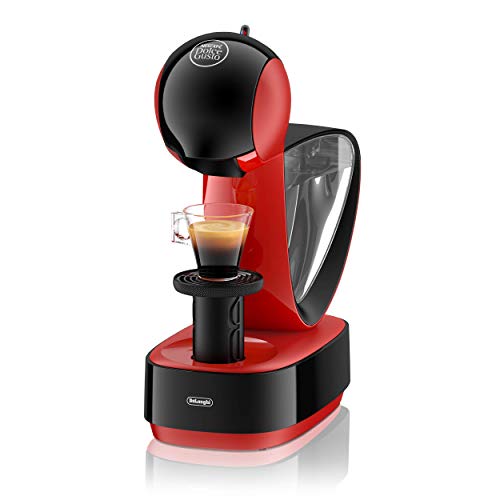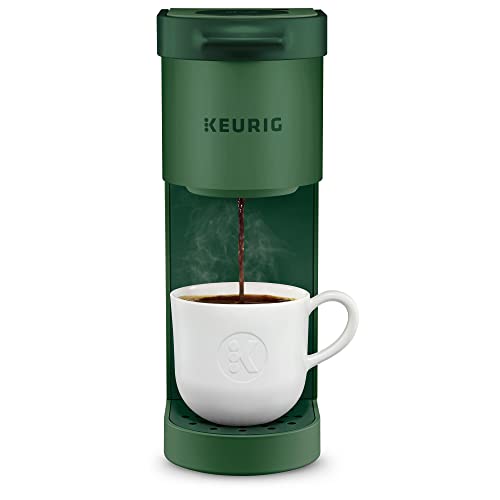5 Killer Quora Answers On Pod-Making Machines
 Detergent pod-making machines (click through the up coming web site)
Detergent pod-making machines (click through the up coming web site)
From K-Cup(r) and Tassimo(tm) to Nespresso(tm) and Senseo(tm) There are many different pod coffee pods machine machines to pick from. All work in the same basic way by heating water by pressing a button.
The process of making pods is a bit more complicated but it’s also easy enough to do at home. Here are a few things to keep in mind when purchasing a pod-making machine:
Detergent pod coffee makers Manufacturing
Detergent pods are convenient, efficient, and green. But how are they made? The process is surprising simple. A single-dose capsule contains an insoluble film that dissolves in contact with water. This film is typically made from polyvinyl alcohol, which dissolves in water and leaves no residue on clothing. The detergent formula also includes chelating agents that soften hard water, reduce detergent degradation and optical brighteners for whites.
The sachets are then sealed, protecting the contents from moisture and contamination during storage, transport and use. Laundry pod makers employ high-speed production techniques to meet the demand. They can produce between 600 and 240 pods per minute, ensuring that the product is delivered within the timeframes set by the manufacturer.
Tide manufactures a portion of these pods. The company uses only high-quality ingredients made in the USA and does not import cheaper substitutes. It also makes sure to verify and trace its raw ingredients.
A machine to make laundry pods has a product hopper which holds liquid detergent until it is used. A precise dispenser then fills each pod with the exact amount of detergent. The machine then seals each pod. The machine’s patented design protects the film’s water-soluble properties, while routine inspections maintain 0.02ml filling accuracy.
In addition to PVA and PVA, pod films also contain other ingredients that help them fend against liquids and also impart other properties, including the ability to taste horrible. For instance, MonoSol uses Bitrex, a quaternary ammonium compound known as denatonium. This chemical is so bitter, it can repel people at concentrations of as little as 0.01 percent. It also discourages children and pets from putting sachets of the chemical in their mouths.
When you’re not using your laundry pods, keep them out of sight and reach of young children or pets. By keeping them away from moisture and light you can stop their ingredients from degrading too quickly. Proper storage conditions will also increase the life of the detergent. Also, ensure that you be sure to properly dispose of laundry pods after use.
Detergent Packaging for Pods
Detergent pods are a craze that is stealing market share in dishwasher and laundry detergents as well as personal care products such as shampoo. They contain a concentrated mix of surfactants, other cleaning ingredients, and a water-soluble coating. They are easy to use, store and a safer alternative to liquid cleaners.
Unlike traditional detergent containers, which are made of PET plastic and may contain dangerous chemicals such as 1,4-dioxane, pods are an array of harsh chemicals that are covered by a film of polyvinyl alcohol. These chemicals may differ based on the brand. They may contain surfactants and bleaches as well as solvents, optical brighteners or enzymes. These ingredients are available on the websites of the manufacturers.
The PVA used in the film to cover the pods is biodegradable, and is listed on the Environmental Protection Agency’s CleanGredients database. It also has received the Nordic Swan eco-label, one of the strictest independent ecolabels in existence. The EPA states that it can be broken down to simple natural compounds by microorganisms in wastewater treatment and soil plants.
Laundry pods are a great alternative to liquid detergent. Many brands provide a range of products, from basic detergents to fabric softeners and stain removers. According to an Nohbo study in the US laundry pods account for 15% of household soap sales.
Most pods contain only one dose of laundry detergent, but some include additional ingredients like fabric softeners stain removers, and scent boosters. Many manufacturers add anti-bacterial properties to the detergent to fend against bacteria, too.
Despite their convenience Some people have complained that laundry pods do not dissolve completely. This can be a result of filling up the washer tub too much or using water that is cold, or adding the pods too soon in the cycle. This can also happen if consumers don’t follow the instructions, as pods require a certain temperature and pressure of water to dissolve.
Pods aren’t toys, so users should keep them out of the reach of children. Ensure they are kept in a safe location for storage. Likewise, they should always be emptied of their contents before putting them in the washing machine or dishwasher. Recycling the packaging as soon as is feasible can help reduce waste and prevent pollution.
Detergent Filling Pods
Laundry pods are quickly replacing liquid detergents that are traditionally available in the household cleaning market. The tiny packets are easy to use, and they do not require measuring. They are also available in a variety of sizes and strengths. Depending on your laundry needs you can pick from single-dose laundry detergent pods, multi-compartment pods or even powder detergent pods.
The secret to pods is their thin encapsulating film. It must be able to hold liquids and solids that are chemically active, while retaining its shape. But, it must also be able to completely dissolve and quickly in water – even cold water. Many companies have settled on a PVA-based polymer that has both properties. The rest of the pod has a mixture of powerful detergents bleaches, solvents optical brighteners, enzymes, and preservatives. Manufacturers typically disclose the ingredients of their detergents.
Contrary to powder and liquid detergents that are packed in high-density plastic pods are made from polymers made from plants that can be broken into smaller pieces by microbes that live in the soil or in ocean waters. Scientists at the Woods Hole Oceanographic Institution claim that PVA degrades within less than 70 days in the sewage sediments. This is a lot faster than conventional detergents, which can take hundreds of years to break down.
While laundry pods have revolutionized the world of laundry, they’re not without their disadvantages. One of the disadvantages is that they’re more expensive than powder or liquid detergents. Additionally, if you lick a coffee pod machine when handling it, you’ll be met by a bitter taste and an abrasion to the chemical.
Another disadvantage is that they’re not as flexible as traditional detergents. The use of a laundry pod restricts your washing options to the specific cycle listed on the package, which can be a problem when you own top-loading or front-loading washer with an automatic fabric softener or detergent dispenser. If your machine is equipped with an agitator, pods may not dissolve correctly.
Speak to your local laundromat for the best option. Always read the instructions. If your clothes have streaks or stained after washing with a pod, immediately wash them without adding more detergent. Never dry clothes that have been stained with detergent, as the heat can make it more difficult to remove the stain later.
Detergent Pod Inspection
Laundry detergents pods are very popular due to their ability to dissolve quickly and efficiently in hot, soapy water. They also remove stains from most fabric. The pods aren’t without controversy. Many activists refer to them as plastic and they are a growing source of marine debris. Although it is true that polyvinyl and PVOH that are used to make the pods, are derived from oil, the makers claim that the plastics aren’t as much of a threat as other types because they biodegrade when placed in water.
Since laundry pods were first introduced in 2012, they’ve gained popularity and make up more than a third of the nation’s liquid detergent sales. Many major brands now sell the Sachets, which are similar in size to ice cubes, and come in different scents and colors. The pods, marketed as eco friendly, are a result of the high concentration of detergent in a pre-determined amount. According to the Cleaning Institute, which represents large multinational companies like Procter and Gamble, this results in smaller packaging and weight, and lower shipping emission. The manufacturers also say that the pods’ plant starches and other natural materials help make them water-soluble, and they can be biodegraded in a short period of time in water treatment plants.
The pods can still be dangerous if handled incorrectly, despite all the hype. The thin membranes that contain the detergent can break open easily and cause irritation to a person’s eyes or skin, and if ingested by large amounts, they could cause chemical poisoning. In addition the outer packaging that was designed to keep children from gaining access to the pods is easily ripped at the zipper track. In September 2012, Consumer Reports called on manufacturers to ensure the safety of their pods by changing their transparent containers into opaque ones and adding child-resistant latches. A number of manufacturers responded and added additional safety warnings.
 In the meantime, to avoid problems, keep the pods out of the reach of children and seniors and away from pets. Place them on a shelf or lock them away to ensure that children don’t mistake the pods as candy. Also, ensure that you use a detergent that is compatible with the type of washer. Be aware that cold water particularly if it’s below 60 degrees F, could not dissolve the pods, causing your machine to clog or leave a residue on your fabric.
In the meantime, to avoid problems, keep the pods out of the reach of children and seniors and away from pets. Place them on a shelf or lock them away to ensure that children don’t mistake the pods as candy. Also, ensure that you use a detergent that is compatible with the type of washer. Be aware that cold water particularly if it’s below 60 degrees F, could not dissolve the pods, causing your machine to clog or leave a residue on your fabric.